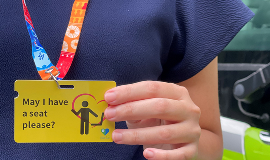Government officials will NEVER ask you to transfer money or disclose bank log-in details over a phone call. Call the 24/7 ScamShield helpline at 1799 if you are unsure if something is a scam.
Meet the Designers Of The “May I Have A Seat Please?” Lanyard
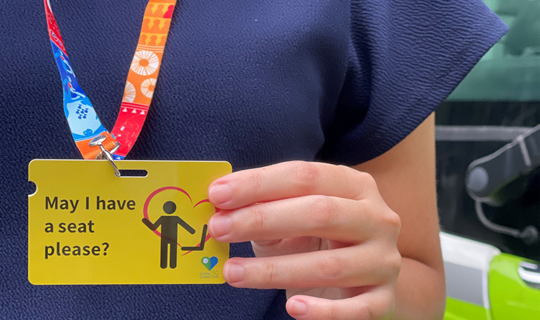
Have you noticed someone wearing a sticker on public transport that says, “May I Have a Seat Please”?
He or she may have a medical condition that you may not be aware of.
The “May I Have a Seat Please” initiative aims to help commuters with invisible medical conditions alert fellow commuters that they would like a seat on public transport, and these identifiers can be obtained from the Passenger Service Centres at MRT stations, bus interchanges or TransitLink Ticket Offices.
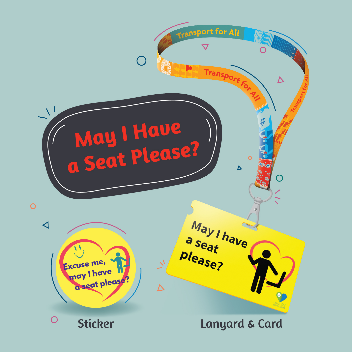
The “May I Have A Seat Please?” sticker (left), compared to the new lanyard and card version (right)
On Monday, 26 April 2021, the Caring SG Commuters Committee launched a permanent version of this sticker, which now comes in the form of a lanyard and card.
To encourage co-creation with the community, the Caring SG Commuters Committee held an art competition for all with disabilities/ special needs through a youth organisation, Movement of Inclusivity.
The theme was “Who am I” and the top designs from the submitted artwork were adapted and incorporated into the lanyard.
We received close to 100 submissions for the competition and the top 5 were voted by the public on our the Caring SG Commuters Facebook page.
To capture the diversity of the submissions, the Caring SG Commuters Committee and MOI have decided to incorporated elements from all 10 artworks to create the final design.
Find out the stories behind some of the artworks and the talented artists below: Asher, Joy, Zer Yinn, Samantha and Say Beng!
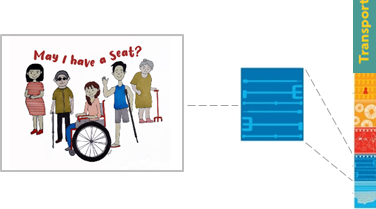
Artwork by Asher Ng, 17
Asher’s mother shared more about his artwork: “The five people in the artwork represent individuals with various forms of disabilities and conditions.
They form a shape of an invisible heart to signify that commuters need to care and look out for these individuals who are more in need of a seat on our public transport.”
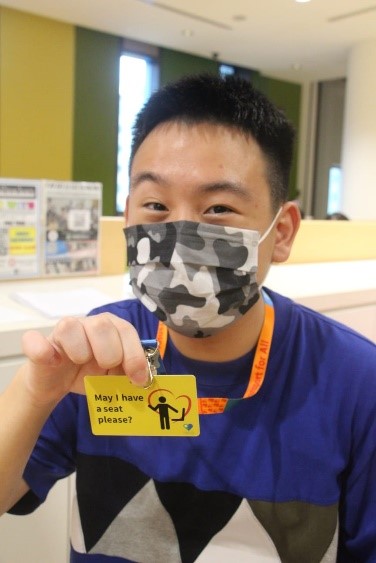
Photo Credit: Movement of Inclusivity
Asher is an individual on the autism spectrum. Individuals on the autism spectrum may process information and experience situations differently. They may also have different skills and preferences on how they communicate and interact with others.
Just as all of us are unique, no two individuals on the autism spectrum are the same. This lanyard can help Asher and other individuals when they seek help on public transport.
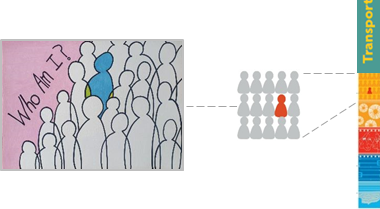
Artwork by Joy Koh, 18
Joy shared: “The inspiration for my artwork came about from my own 'invisible' medical condition, which was diagnosed in 2015 - the Moyamoya Disease.
People with invisible illness, like me, look exactly like everyone on the outside, but no one knows I have a medical condition. This is depicted in the 'person in blue', in the drawing.”
Joy has Down syndrome and flat foot.
Joy’s mother shared, “Joy will feel tired after standing long on the public transport but will feel shy to ask for a seat as she looks young on the outside.
Even though she may look like us, standing among the crowds, some do not know she has an illness, and may need a little help at times.”
Some commuters might be afraid of rejection/misunderstanding, thus will hesitate offering or giving up their seats.
Let’s encourage our friends and family not to be afraid to step up and to offer their seats on public transport!
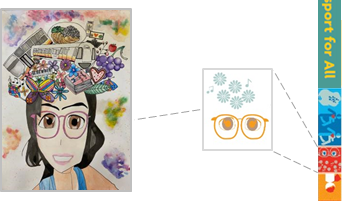
Artwork by Lai Zer Yinn, 19
“I am Zer Yinn.
I am 19 years old.
I am a girl.
I stay in a HDB flat.
I like to draw, listen to music, play game, paint, play piano.
I like to go to the park, ice skating, swimming, rock climbing, library. I go to these places by bus, train.
I like to eat spaghetti, cookies, candy apples, chicken rice, grapes, apples, banana, peach, watermelon.
I like to draw manga, fish, flower, butterfly, firefly.”
Zer Yinn’s mother shared, “Zer Yinn has Autism. She is not able to read or understand the theme for the artwork. To explain to her, I set some questions for her to answer. From her own answers, she can then visualize what to draw.
“We also searched for pictures of the items on the internet and she will choose the pictures that she wants to use as reference. In addition to that, we also showed her the different drawings by various artists to expose her to different types of artworks.”
Zer Yinn’s art conveys that differently-abled individuals have aspirations, hopes and dreams. Like Zer Yinn, many commuters wish for acceptance in the society and for a safe and inclusive journey, just like other commuters.
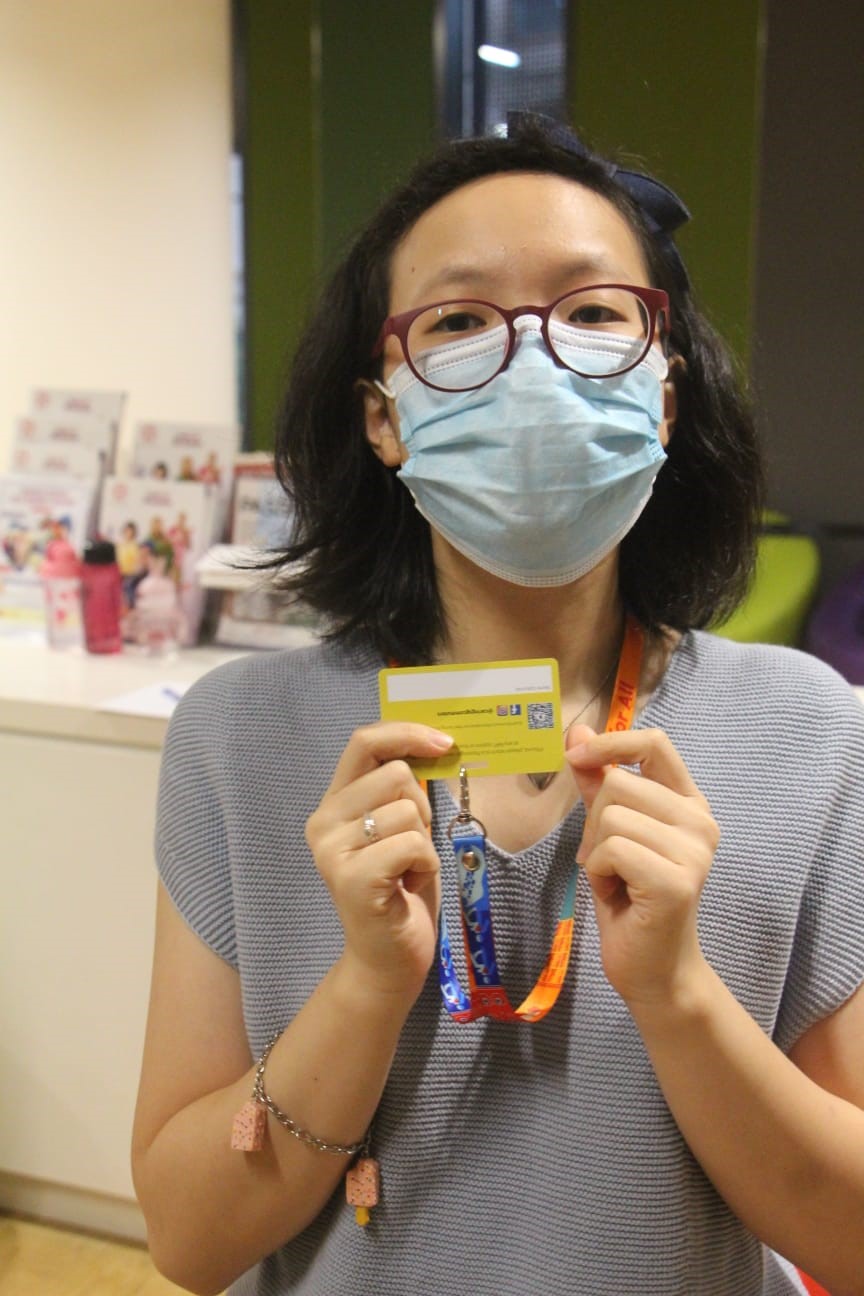
Photo Credit: Movement of Inclusivity
Zer Yinn’s mother added, “Zer Yinn has difficulty in communicating with others and does not understand social cues. There was one instance an auntie used her hand to ‘reserve’ the seat on the train beside her for her companion who was a little slower. But Zer Yinn does not understand that and she just sat down. That angered the auntie and her companion. To them, Zer Yinn looks like a normal young adult. Zer Yinn might also suddenly feel very happy and laugh out loud or clap her hands out of nowhere.
Through the “May I have a seat please?” identifier, commuters can better empathise with invisible conditions like Zer Yinn’s and try to be more understanding towards them.
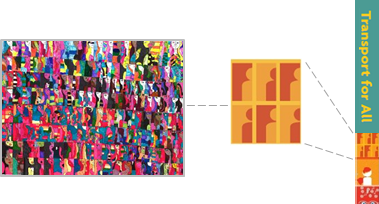
Artwork by Samantha, 24
“I am Samantha, I am special with Down syndrome. These are the things I like, colours and faces of my favourite cartoon characters.”
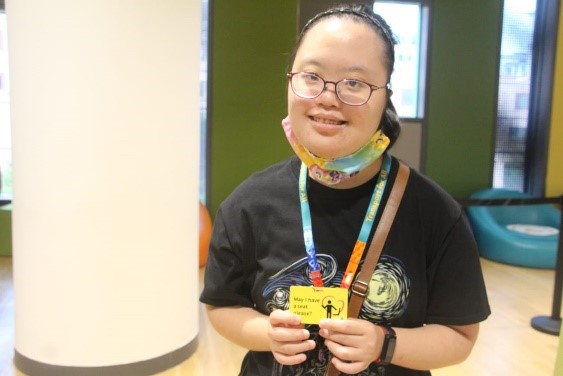
Photo Credit: Movement of Inclusivity
Samantha’s mother shared that they understand when commuters may not be able to identify her needs as she looks young and physically able just like any other commuter. Most usually look out for prominent signs associated with the person's physique/ appearance such as the elderly or expectant mothers when offering a seat.
Samantha takes the public transport to work five times a week and often feels tired on the bus journey home as she also has other conditions such as flat foot, atrial septal defect, and is in remission for leukaemia. However, she will feel shy to ask for a seat when the bus is crowded and would choose to stand instead.
The “May I have a seat please” initiative is ideal for persons with special needs as the sticker/ lanyard and card act as good identifiers for commuters to know when others need a seat.
Samantha says she “will be very happy to take a seat if being offered by another commuter but would be glad to offer her own seat to others who may need the seat more.”
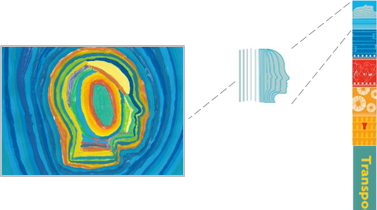
Artwork by See Say Beng, 33
Say Beng’s caregiver shared, “The head in the picture represents himself while the series of lines and hues surrounding the head represent his worldview.
To him, his world is melancholy (blue means sad) but there's also hope and happiness (Yellow represents hope and happiness and sunshine) with family and friends being of utmost importance (lighter brown).”
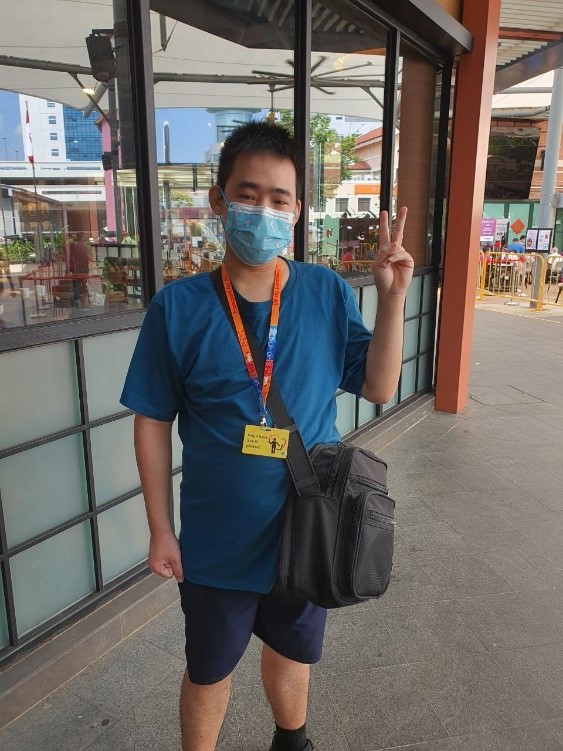
Photo Credit: Movement of Inclusivity
Say Beng has Autism with Attention Deficit Hyperactivity Disorder (ADHD). He usually travels on public transport alone, and might have difficulty asking for help if he loses his way.
Say Beng is friendly and may exhibit self-stimulatory behaviour, such as pacing around and verbalising repetitively about food, shows or music that he likes to people around him. However, people may get confused or even get frightened by him.
Say Beng is different and he hopes the world will be more understanding and accepting of him.
We hope that the lanyard and card identifier can help more commuters to understand that these seemingly ‘disrupting actions’ may actually be their coping strategies, particularly in an environment that seems to be overwhelming to them, such as crowded or noisy places.
Discover more inspiring stories and share your own experiences with caring commuters at www.caringcommuters.gov.sg/community
